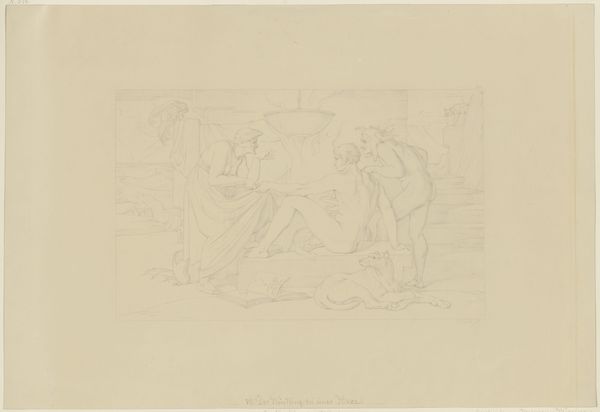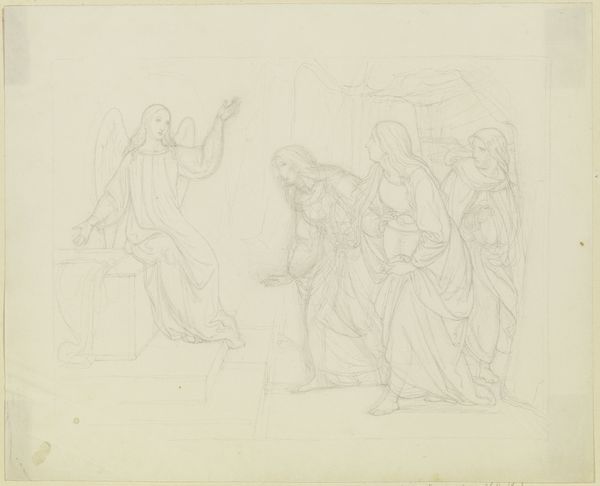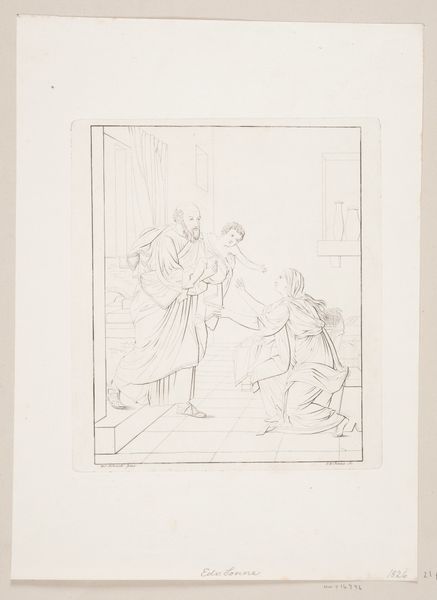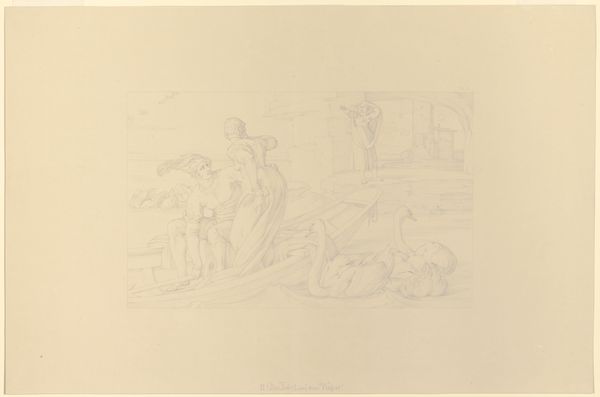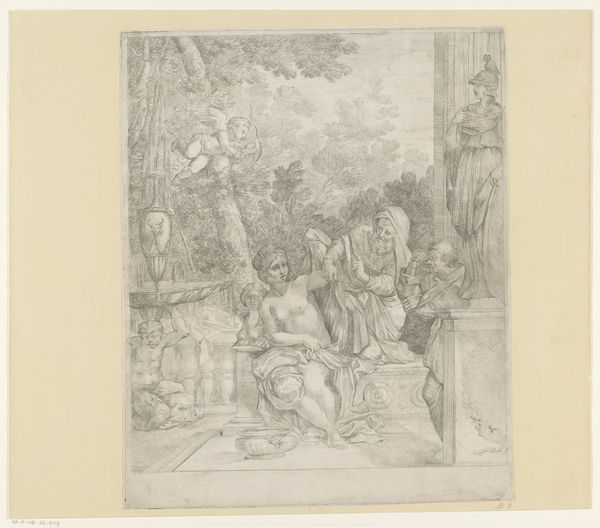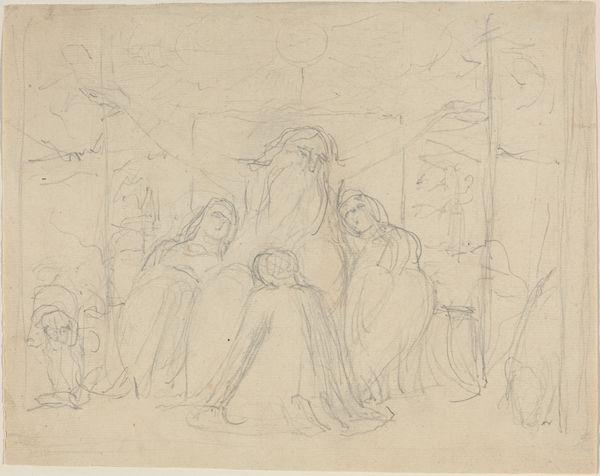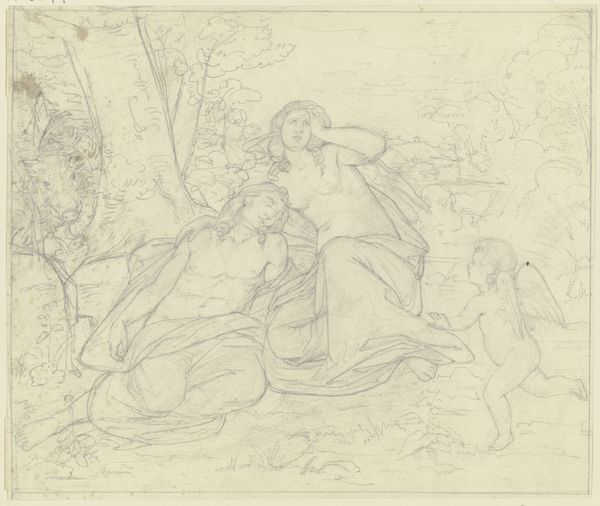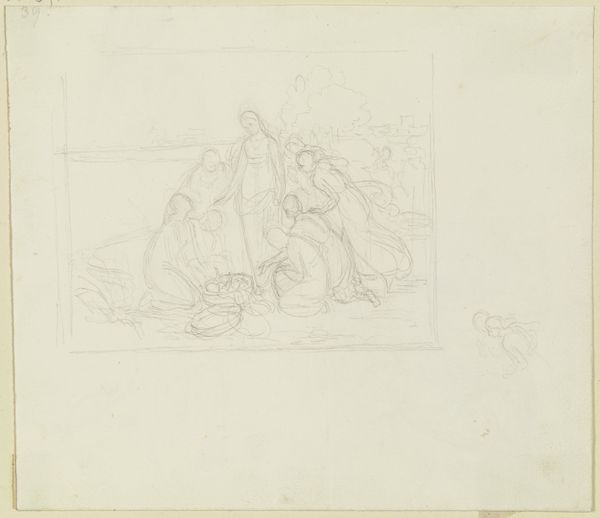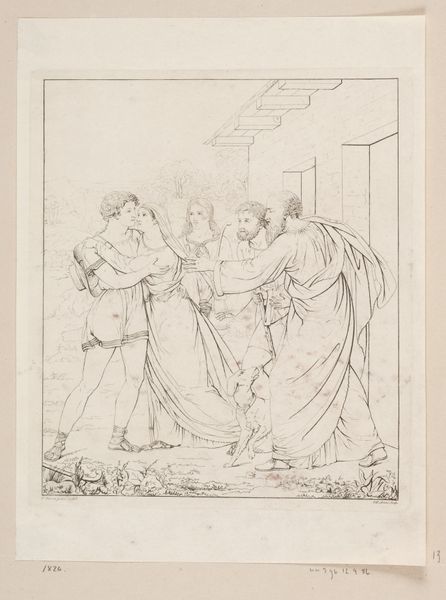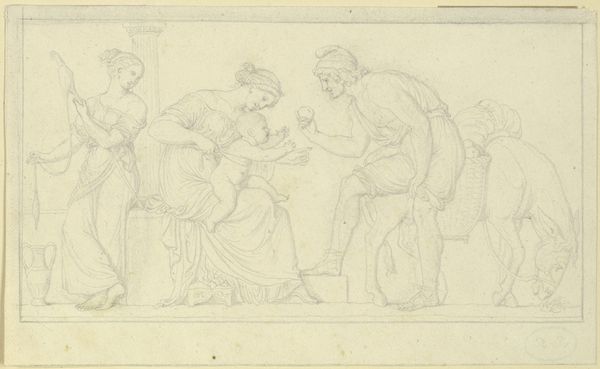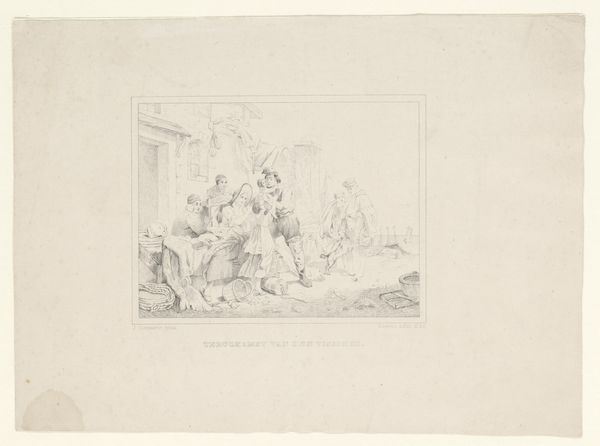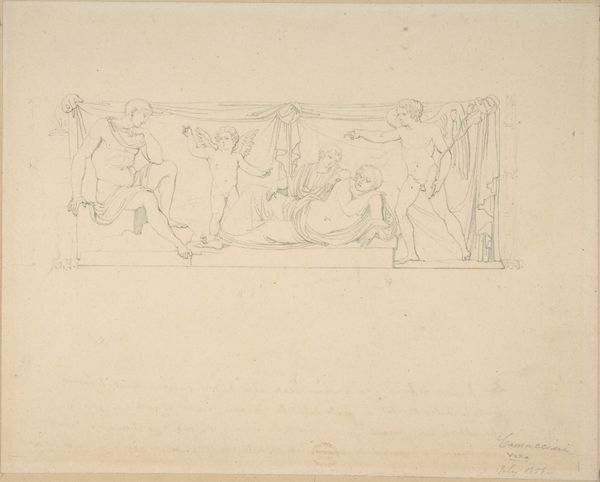
_Aus dem Leben eines Wüstlings__ VIII. Stelldichein auf dem Kirchhof 1845
0:00
0:00
drawing, pencil
#
pencil drawn
#
drawing
#
etching
#
figuration
#
german
#
romanticism
#
pencil
#
pencil work
Copyright: Public Domain
Curator: Bonaventura Genelli’s drawing, entitled "From the Life of a Wastrel VIII: Rendezvous in the Churchyard," created around 1845, certainly possesses a somber mood even from a distance. It resides here at the Städel Museum, rendered in pencil. Editor: It does have a decidedly muted tonal quality given the pencil work. The line work alone creates a stage upon which to explore romantic angst. I wonder how Genelli's process contributed to this visual poem on morality? Curator: Indeed, notice how the very composition—the careful arrangement of figures—amplifies this drama. A figure advances stage right, with another kneeling by a tomb in front of several cloaked figures. Consider the placement of these characters relative to each other; it directs the eye and orchestrates the narrative tension. Editor: It's compelling to consider the labor involved in a work like this. Each stroke of the pencil lays down a social decision—a record of artistic choice influenced by and also influencing broader attitudes of piety. What level of pencil was he using, how much did this determine the final outcome, and how long did he labor on it? These production factors determine the status, visibility and access we each have when approaching this artwork. Curator: While it's true that labor and material conditions always shape artistic creation, what interests me more is how Genelli uses line itself as a means of articulating character and emotion. Notice the stark linearity contrasted with rounded edges, and how these compositional choices construct a narrative of moral ambiguity. Is it the sharpness that creates this, the visual suggestion of harsh judgement? Editor: Perhaps. However, the societal conventions of his time also provided him with materials of which this piece relies on and is constructed. Understanding this process— the type of pencil and paper used and how available it was, makes the scene feel more real and grounded. His process speaks to how society at the time supported these forms of romantic morality tales. Curator: Undoubtedly. So when viewed through that prism, we might be able to decode what this work reflects of German romanticism's artistic tendencies and obsessions. Editor: Yes! Bringing in this knowledge alongside your structural deconstruction means viewers gain a deep appreciation for how works like this are actually put together—and also what they give back to us today.
Comments
No comments
Be the first to comment and join the conversation on the ultimate creative platform.
